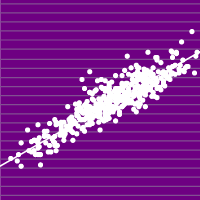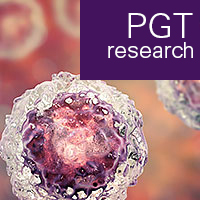Although embryo biopsy is considered a safe procedure, other less invasive techniques are of interest as alternatives that reduce the manipulation of the embryo. Recent studies have shown that blastocoel fluid and culture media can provide a source for cell-free embryonic DNA that can be used for PGT. Since cell-free DNA is present in significantly smaller amounts than cellular DNA from invasive biopsies, a WGA method with high sensitivity and minimal bias is critical to obtain enough material for downstream analysis.
The following publications aimed to answer questions about the suitability of cell-free DNA for PGT. Although their findings raise additional questions and highlight challenges, noninvasive methods have the potential to improve the safety of PGT procedures, increase confidence in genetic diagnoses and, ultimately, optimize embryo prioritization, leading to better pregnancy rates.
Ho, J. R. et al. Pushing the limits of detection: investigation of cell-free DNA for aneuploidy screening in embryos. Fertil. Steril. 110, 467–475.e2 (2018).
The authors examined cell-free DNA from spent embryo medium (SEM) to detect ploidy and sex and to determine whether assisted hatching and morphologic grade have an impact on cell-free DNA amount and predictive value. All samples (SEM, trophectoderm biopsies, and whole embryos) were subjected to WGA with PicoPLEX technology followed by NGS-based PGT-A. A cell-free DNA concentration of 63.2 ng/µl was enough to get an accurate ploidy diagnosis, and assisted hatching did not seem to affect cell-free DNA metrics. Based on low concordance rates, the authors conclude that cell-free DNA from spent medium is not ready to replace cellular DNA in PGT-A, but it is a promising tool for noninvasive screening.
Vera-Rodriguez, M. et al. Origin and composition of cell-free DNA in spent medium from human embryo culture during preimplantation development. Obstet. Gynecol. Surv. 73, 355–356 (2018).
The authors examined the cell-free DNA content of SEM used to culture blastocysts in order to determine cell-free DNA amount and whether a chromosomal diagnosis would be concordant between trophectoderm biopsies and their corresponding culture media samples. NGS-based aneuploidy testing and SNP analysis to detect maternal DNA contamination were performed. PicoPLEX technology was used for double WGA of cell-free DNA in SEM, while FISH was used on the whole blastocysts to detect mosaicism. The cell-free DNA in the media afforded a diagnosis but was discordant with trophectoderm biopsies at a rate of 67%, which was likely due to maternal DNA contamination (92%). Mosaicism was present in most embryos, a possible explanation for the observation of different chromosomal alterations detected between trophectoderm samples and the cell-free DNA from the matching SEM samples.
Kuznyetsov, V. et al. Evaluation of a novel non-invasive preimplantation genetic screening approach. PLoS One 13, e0197262 (2018).
The authors were the first to assess the suitability of SEM in combination with blastocoel fluid (BF) as a noninvasive PGT tool, and they introduced a new technique for noninvasive collection of BF. PicoPLEX technology was used for WGA of SEM, BF, trophectoderm biopsy, and whole blastocyst samples, followed by NGS-based PGT-A. Relatively high levels of concordance of PGT-A results were obtained for all samples. The authors not only demonstrated high concordance between the noninvasive and invasive samples, but they also remarked that the WGA method on combined SEM + BF samples showed superior amplification rates of 100% over previously reported amplification rates from SEM or BF alone.
Tšuiko, O. et al. Karyotype of the blastocoel fluid demonstrates low concordance with both trophectoderm and inner cell mass. Fertil. Steril. 109, 1127–1134.e1 (2018).
The authors were the first to use high-resolution NGS to compare samples from three compartments of the same blastocyst—blastocoel fluid (BF), trophectoderm (TE), and inner cell mass (ICM)—to determine whether cell-free DNA from BF represents the chromosomal status of the rest of the embryo. Using PicoPLEX technology, DNA from all samples was successfully amplified and then subjected to NGS-based PGT-A. The authors found low concordance (40%) between BF and TE or ICM samples, compared to 86% between TE and ICM. BF contained more mosaic aneuploidies and affected chromosomes than matching TE and ICM samples. They conclude that as a single source of genetic material, BF is not diagnostically acceptable with current protocols, and TE biopsy remains the most effective and safest way of determining karyotype.
Takara Bio is proud to support the reproductive health community with innovative and dependable technologies. If you are interested in talking with us about how we can support your product development, please fill out the inquiry form on the left. If you are viewing on a mobile device, please click on the hamburger icon ( ) and scroll down to the form.






